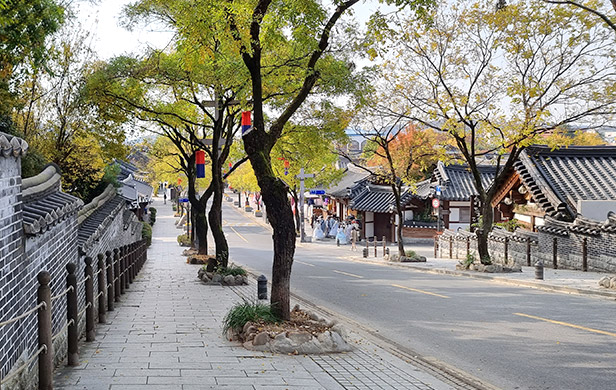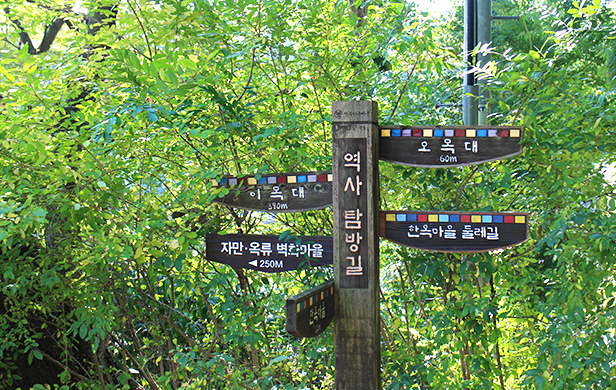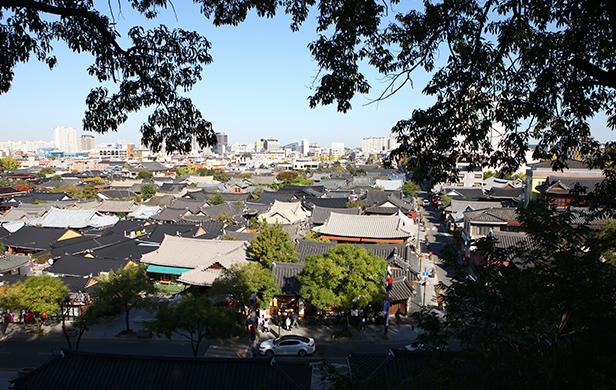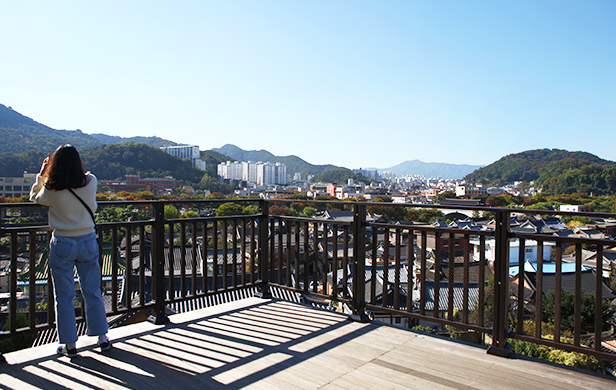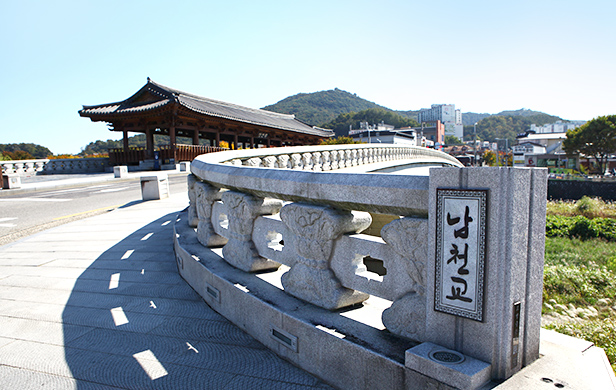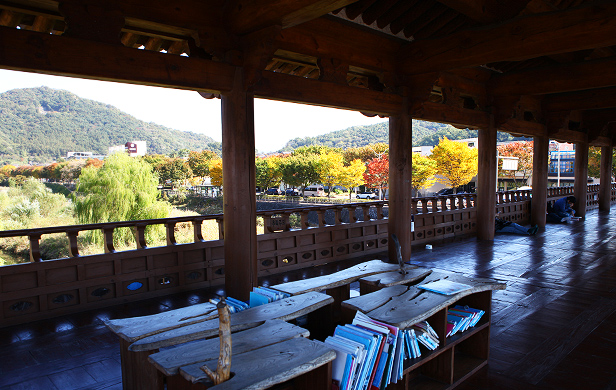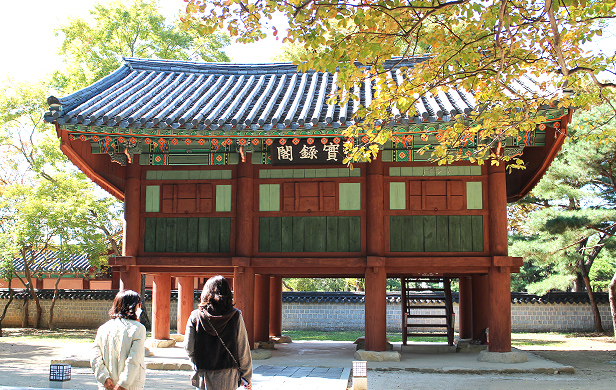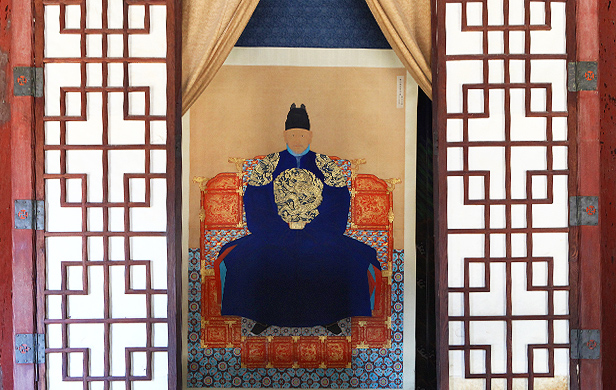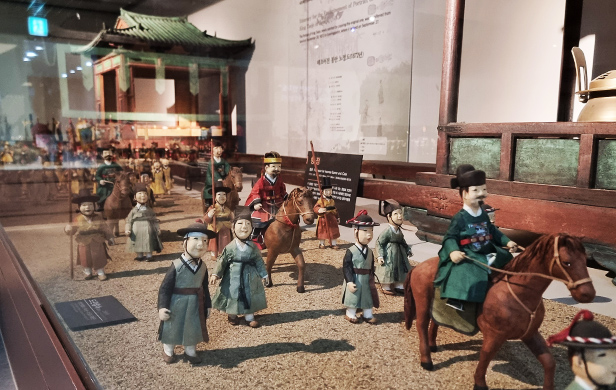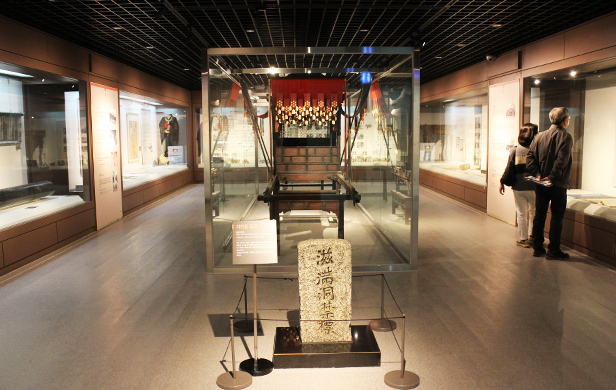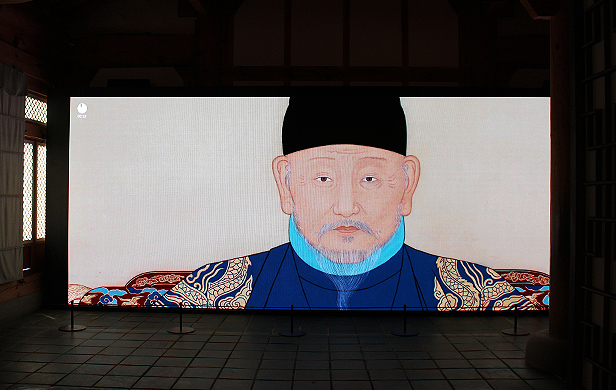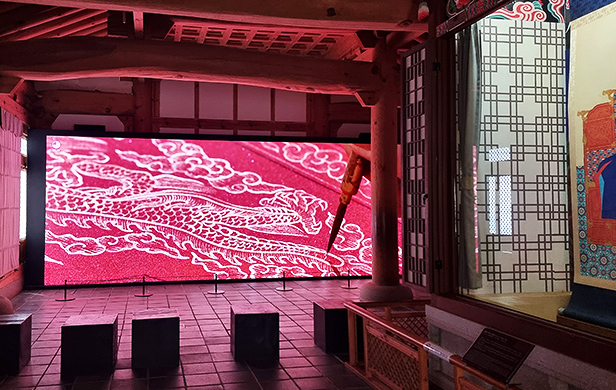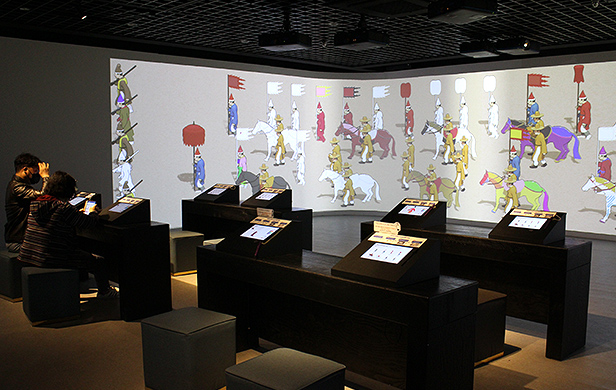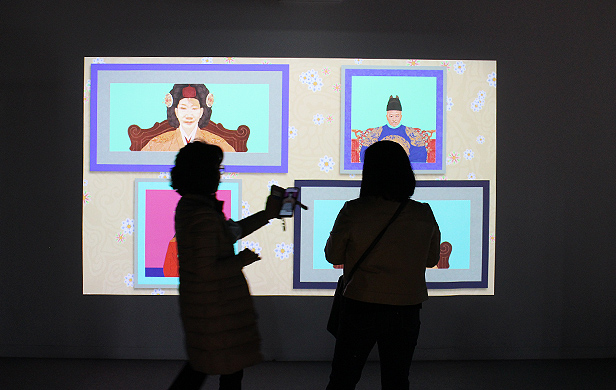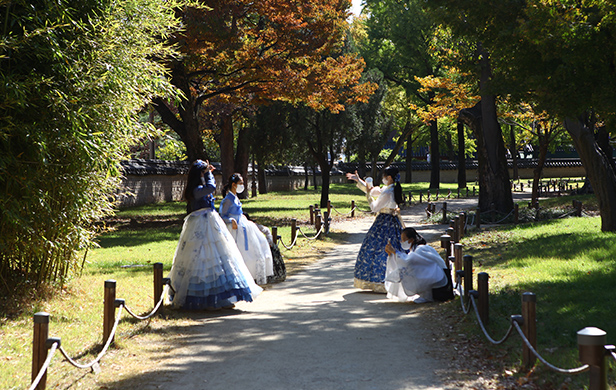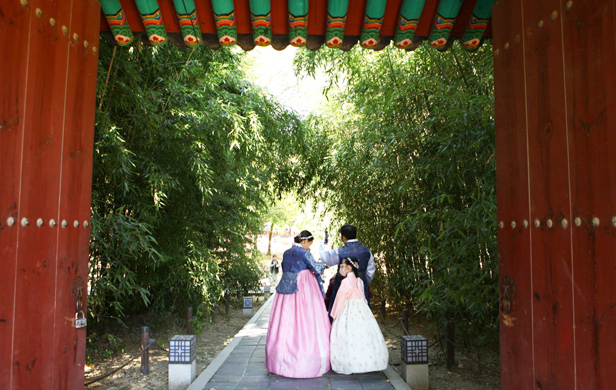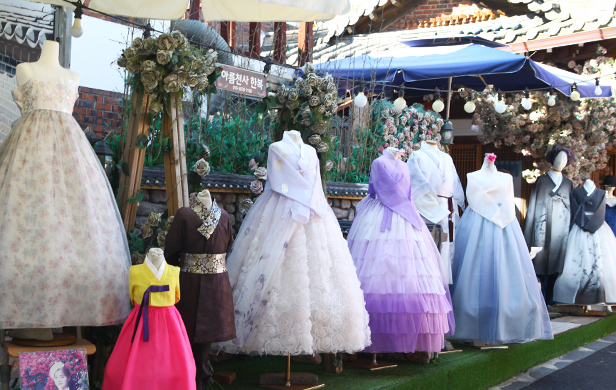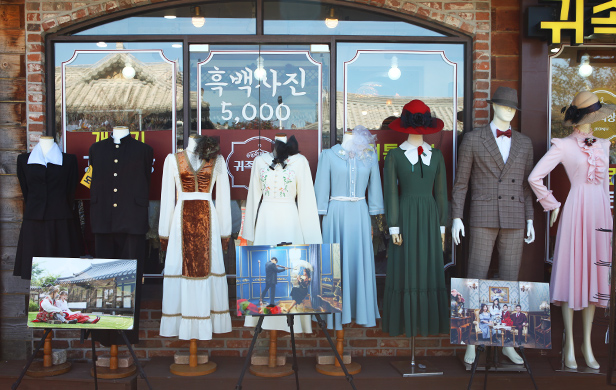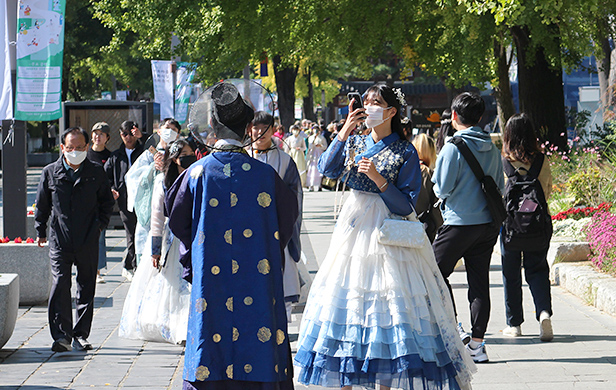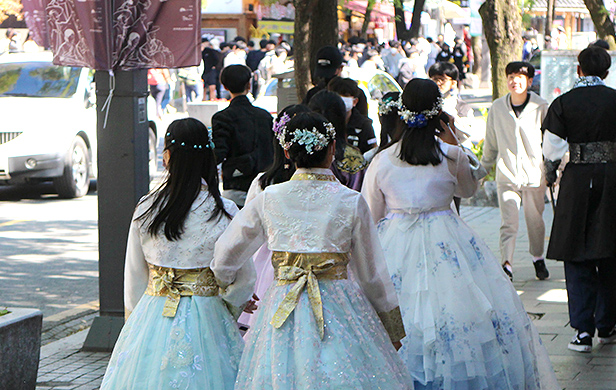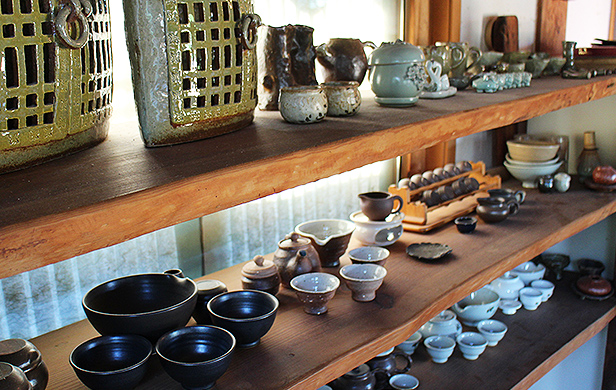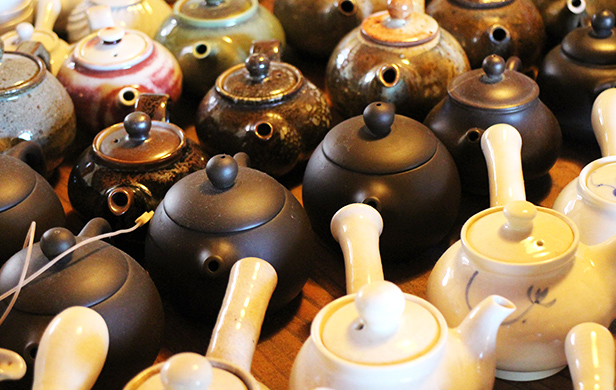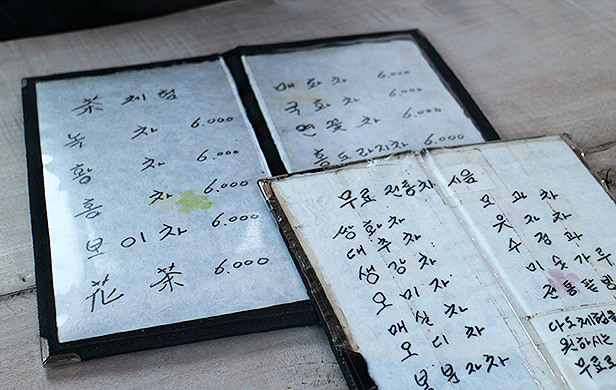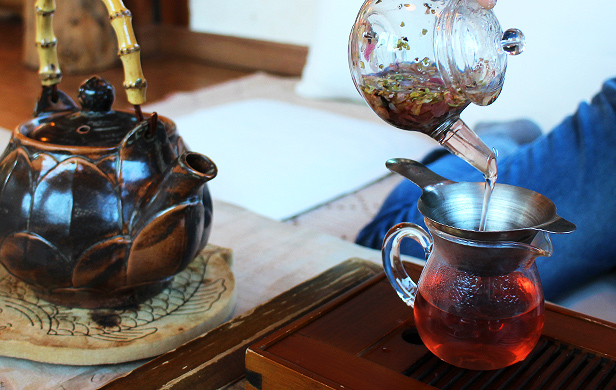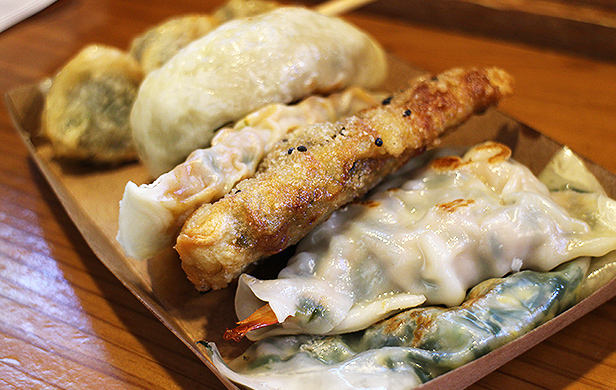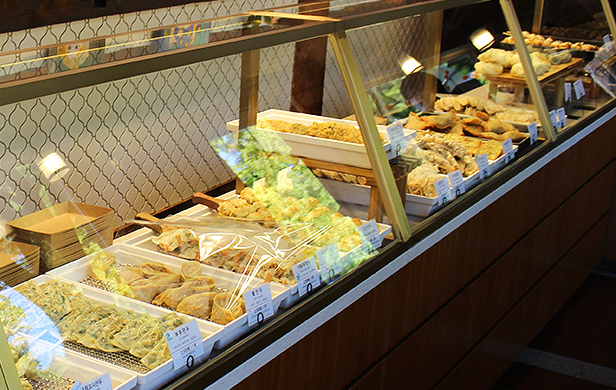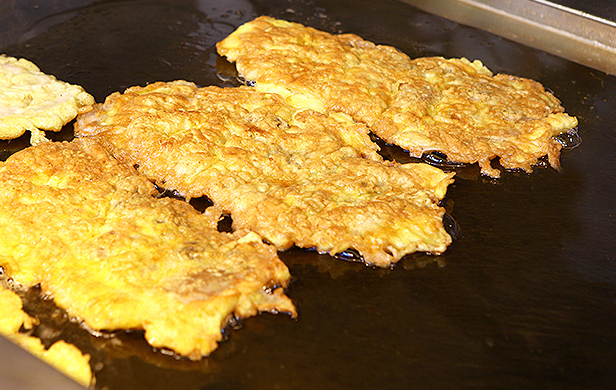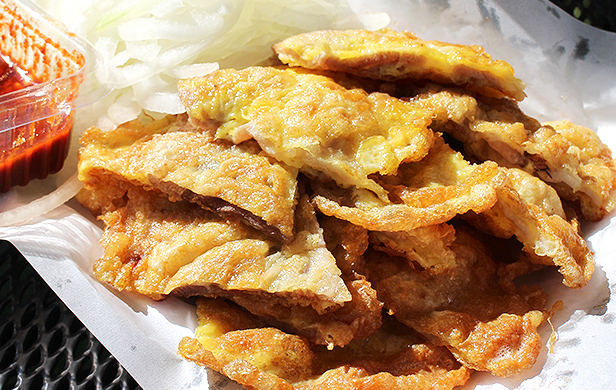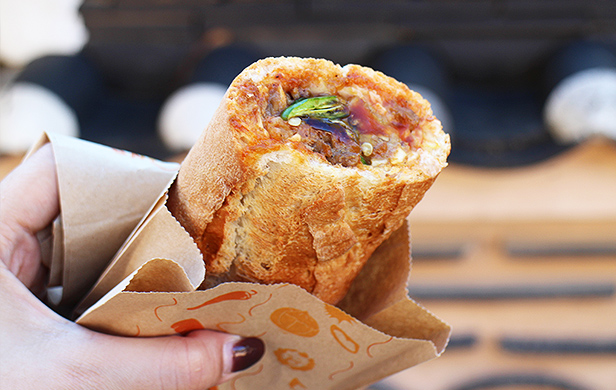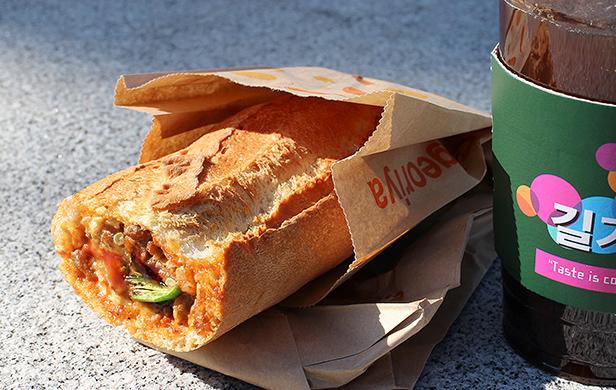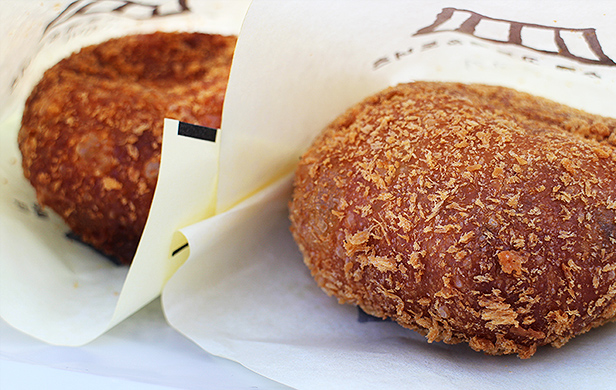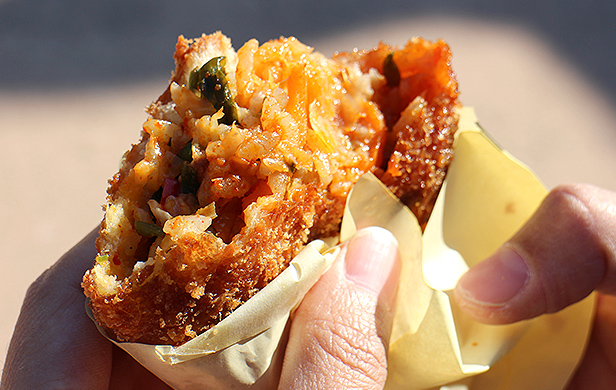2023-2024 Selected as Top 100 Tours in Korea
One-day trip must-haves
Almost people will know Jeonju Hanok Village. Since Jeonju City was designated as an international slow city in 2010,
Jeonju has taken the top spot in various surveys on domestic and foreign tourist destinations in just five years.
3rd place in Asia to visit within a year (2016), 1st most visited domestic travel destination (2017),
Jeonju, including the No. 1 attraction to introduce to North Korea (2018), has now become a leading
cultural tourist destination not only in Korea but also around the world.
As the reputation and status of K-culture rises, the number of foreign visitors is also increasing.
Anyone who has traveled a bit may be familiar with Jeonju, but if you are still new to domestic travel or planning a short weekend trip with your family, lover, or friend, Jeonju Hanok Village is a highly recommended travel destination like a memory guarantee check. If you have enough time and money, it is a good place to stay for a month and experience tradition and nature, but for busy modern people, this time, I would like to briefly introduce only the essential courses for short-term travelers to the Hanok Village.
Even if you can't go to all of them because you don't have time,
and even if it's difficult to experience everything because of your physical strength,
let's definitely go here and try this one.
Only then can you say that you have been to Jeonju Hanok Village properly.
Want to enjoy the superb view of the Hanok Village?Omokdae Dullegil, Namcheongyo Bridge Cheongyeonru, and night walk
In Jeonju Hanok Village, tour guide tours are held every day(see the Hanok Village website for detailed tour information). There are a total of 8 tour courses for each theme, and each course takes about 1 hour. If you want to listen to detailed explanations while slowly walking through the main historical and cultural bases of the Hanok Village, take advantage of the tour guide provided by the Hanok Village.
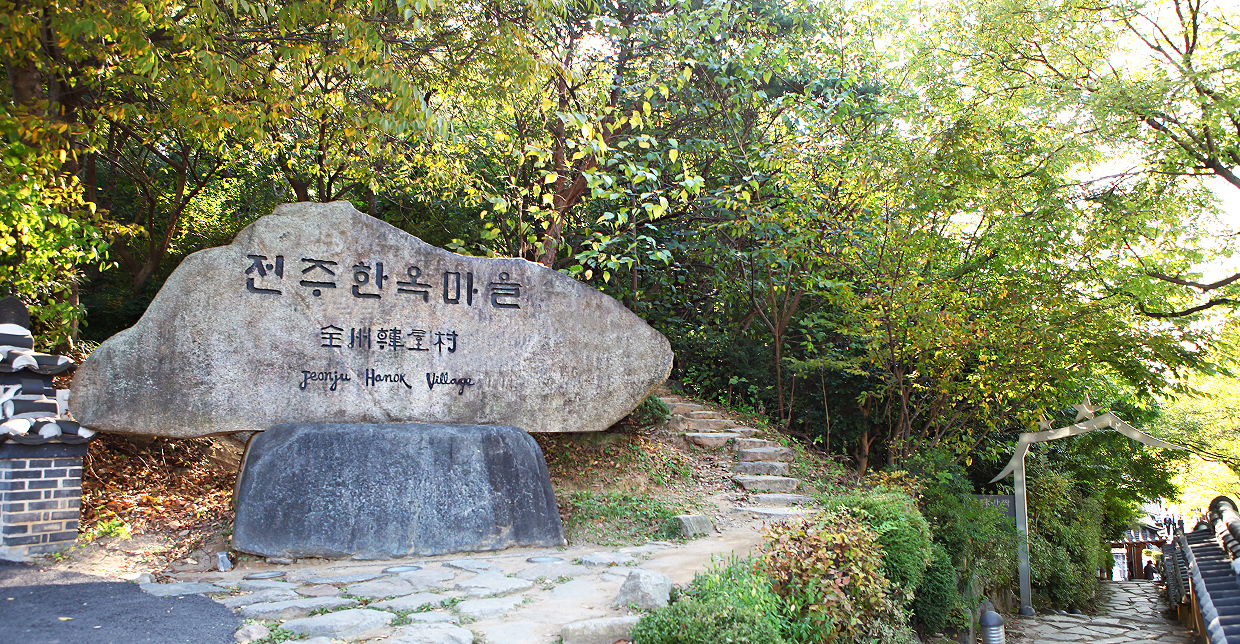
If you want to enjoy the Hanok Village leisurely while walking on a road that is not crowded, we recommend the second course, ‘Hyanggyo Seonbigil Tour’. It is a beautiful walking course that starts at the Omokdae Tourist Information Center, passes through Dangsan Tree, Yangsajae, and Jeonju Hyanggyo Confucian School and ends at Cheongyeonru Pavilion of Namcheongyo Bridge.
The trail leading to Omokdae, the starting point of the course, is connected in various directions from east to west, north to south, which consists of short uphills and gentle steps, making it a good climb for light exercise. Omokdae is a tall pavilion where Yi Seong-gye, the founder of the Goryeo Dynasty, was said to have conquered Japanese pirates, sounded victory songs, and held a party before becoming king and it's the place where he recited the ‘Daepungga’ of Liu Bang, the founder of the Han Dynasty, and harbored the ambition of founding Joseon.
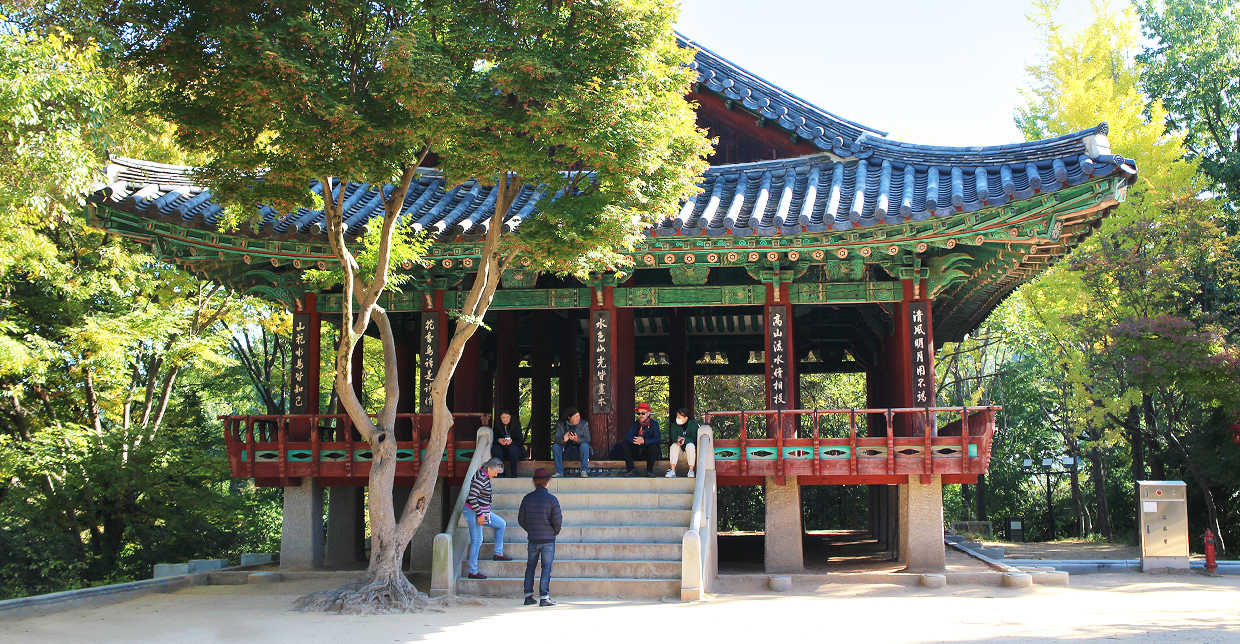
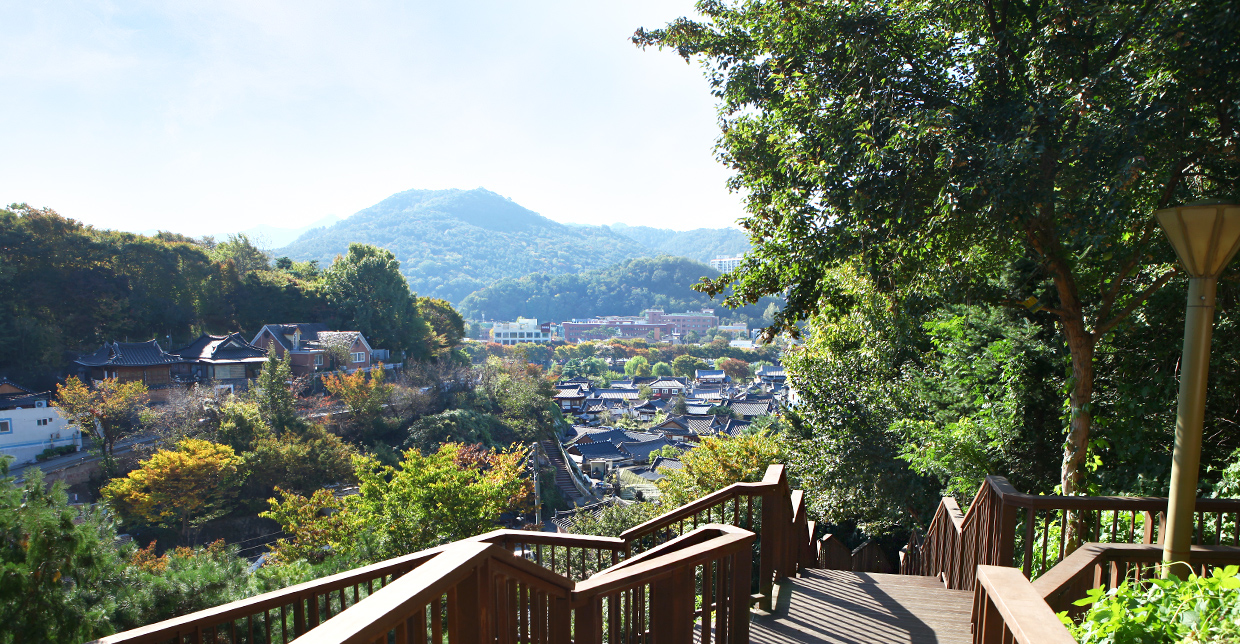
Above all, the view of Omokdae overlooking the Hanok Village while being blown by the wind is excellent. Enjoy all the sights such as the observatory, tiled wall, and murals created here and there, and take pictures at the photo zone. The view is great at any time of the day or night, but if it's your first time traveling to Jeonju, I recommend stopping by first and enjoying the panoramic view of the Hanok Village.
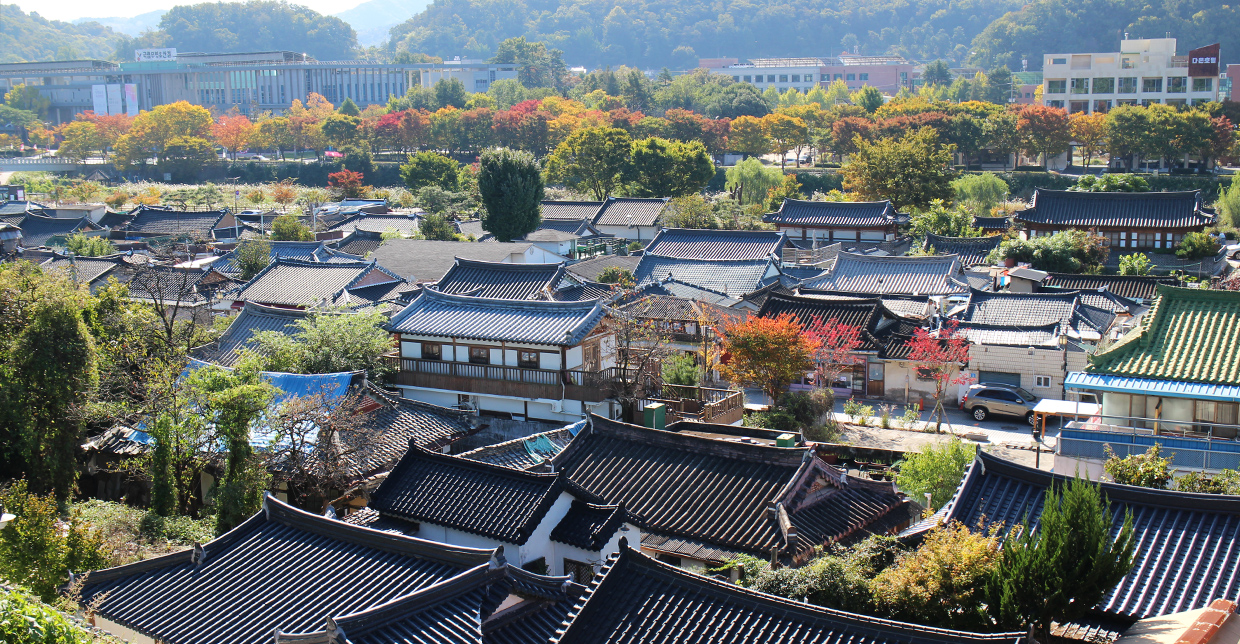
The second viewpoint to see the Hanok Village is Namcheongyo Bridge Cheongyeonru. Namcheongyo Bridge is a large pier in the shape of a rainbow that crosses Jeonjucheon, the southernmost point of Hanok Village, and heads to Seohak-dong Art Village. It is 82.5m long and 25m wide.
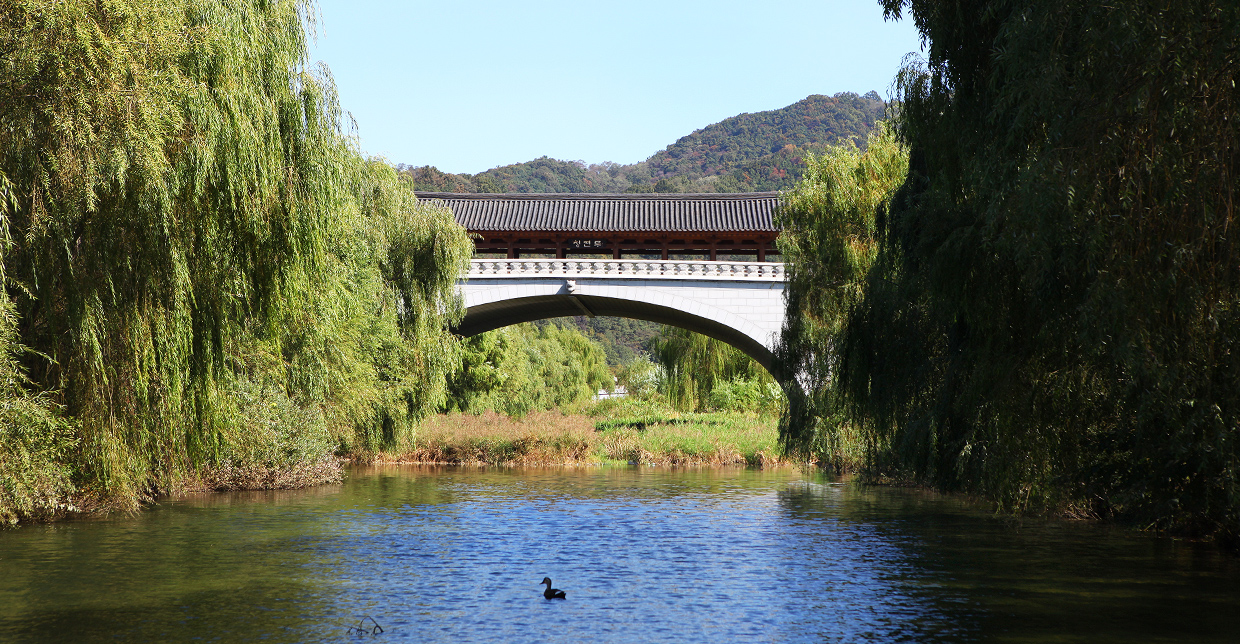
Above Namcheongyo Bridge is Cheongyeonru, a large pavilion with the Korean traditional half-hipped roof on its head. In both name and reality, Cheongyeonru, the best landmark and resting place in the Hanok Village, has a cool breeze blowing throughout the year. When you take off your shoes and step on the floor, you can see the natural river, Jeonjucheon, which flows around the surrounding mountains and villages and harmonizes with the natural scenery.
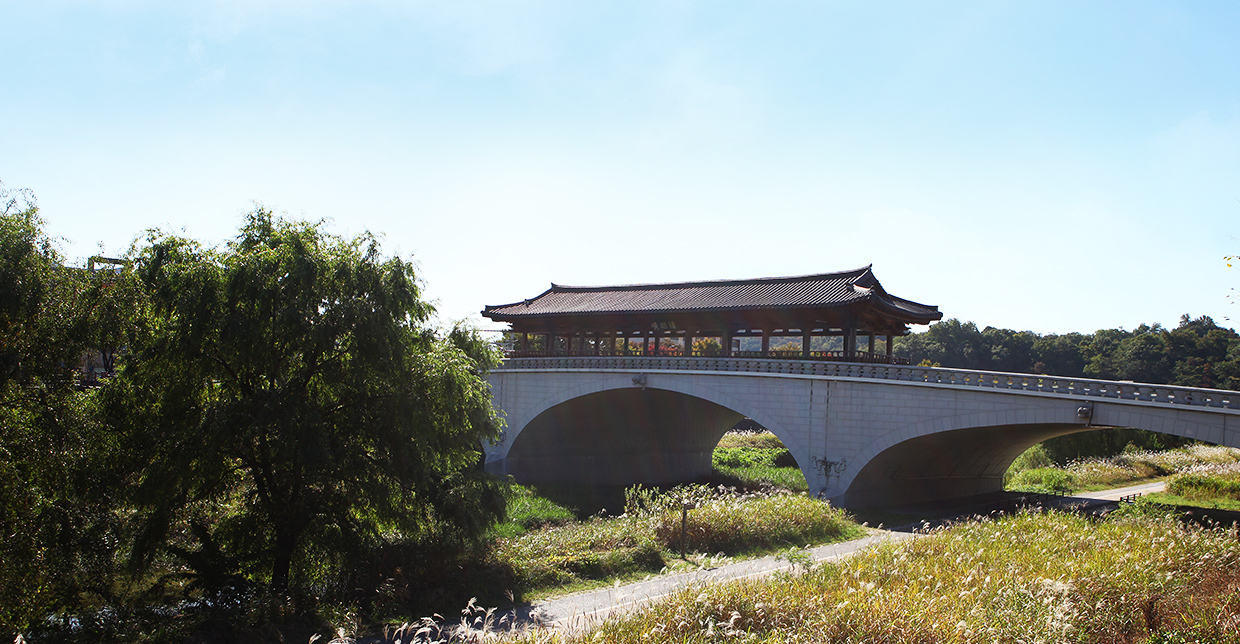
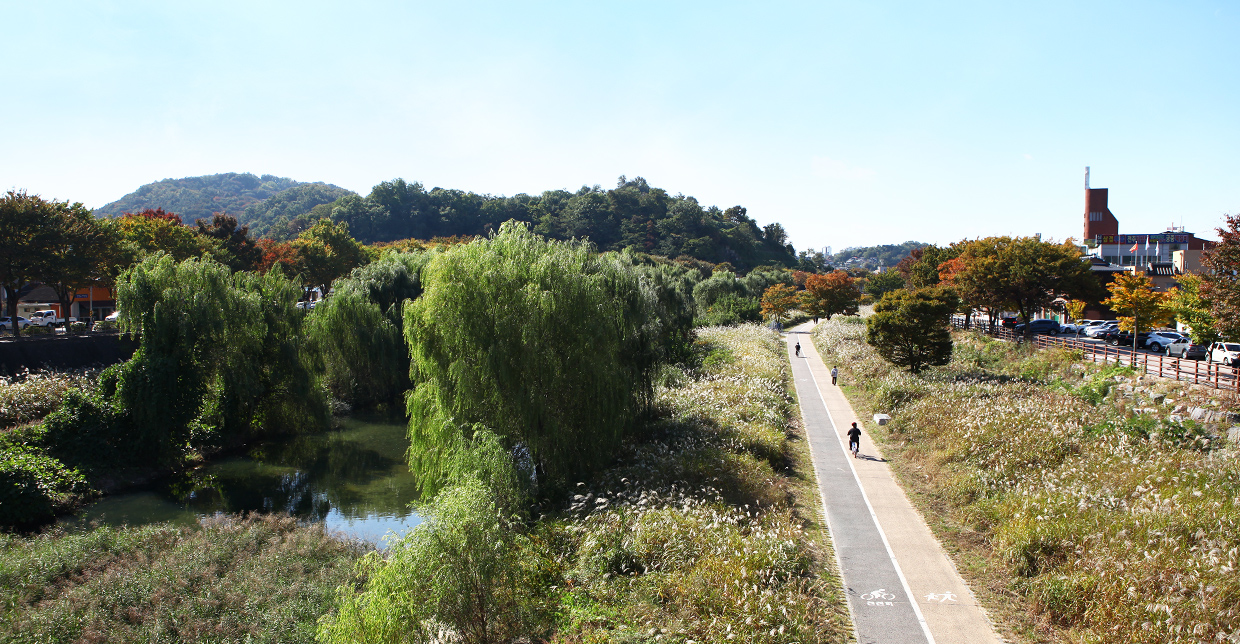
In particular, many people visit Cheongyeonru to rest their tired legs in the summer, but you can see the fantastic scenery that would appear in a picture even in spring with cherry blossoms, autumn with colored leaves, and winter with snow. The name ‘Cheongyeonru’ is also derived from ‘Hanbyeokcheongyeon’, one of the 8 scenic spots of Jeonju, so if you are a traveler who prefers beautiful scenery, it is a must-see attraction along with Omokdae.
Most of the Hanok Village tour will be done during the day, but if you don't see the scenery after the sun goes down, you must haven't seen half of the Hanok Village. If you have even a little bit of energy left, let's have dinner and take a walk in the night view of the Hanok Village. The view of Omokdae and Namcheongyo bridge and Cheongyeonru surrounded by light from afar is also beautiful, and the grain patterns of roof tiles, fences, and wooden doors of about 1,000 Hanok houses in every corner of the alley harmonize with the carefully created lighting, making it more beautiful and subdued than during the day. The true nature of the Hanok Village is revealed only at night when the crowds, noise and sunlight disappear.
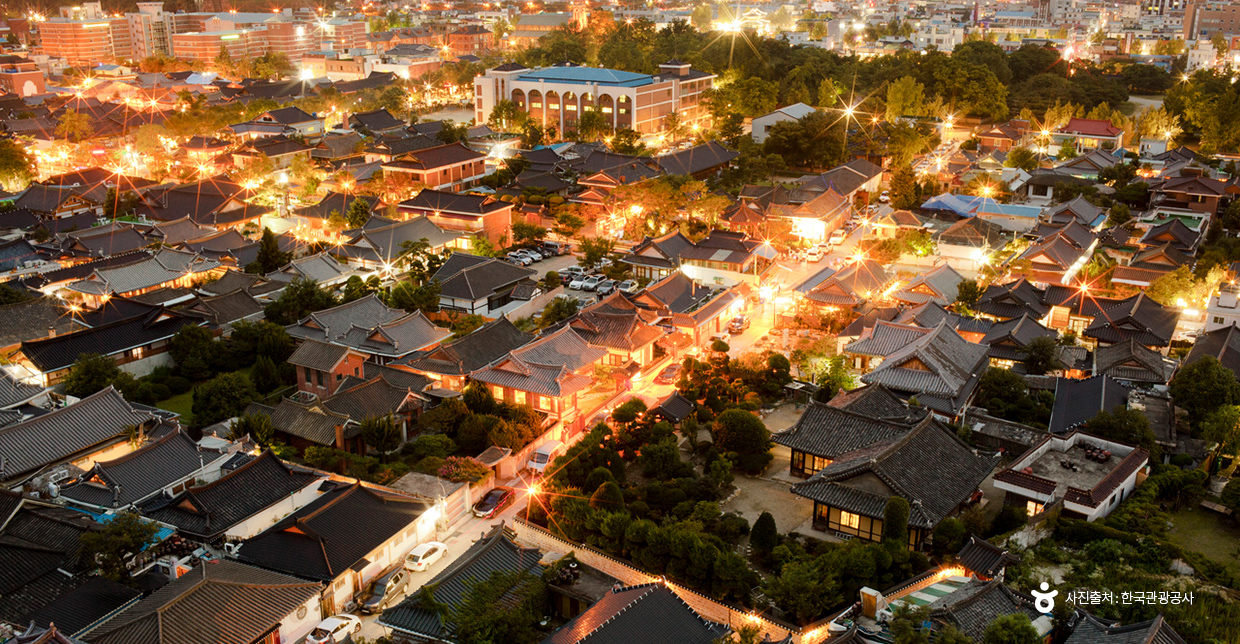
- Location
- Omokdae Dulle-gil : Area around 55 Girin-daero, Wansan-gu, Jeonju-si Map View
Namcheongyo and Cheongyeonru : 940-2 Dongseohak-dong, Wansan-gu, Jeonju-si Map View
- Operating hours
- Always open
The place where the soul of the Joseon Dynasty dwellsGyeonggijeon and Eojin Museum
In Jeonju Hanok Village, there are various cultural sites, exhibition halls, and museums, as well as cultural facilities that provide traditional experiences. There are so many bases that you can't visit them all in a short period of time, but there are places you should never leave out wherever you go. It is the ‘Gyeonggijeon’, which is called the symbol of the Hanok Village, the sense of place, the soul, or the heart.
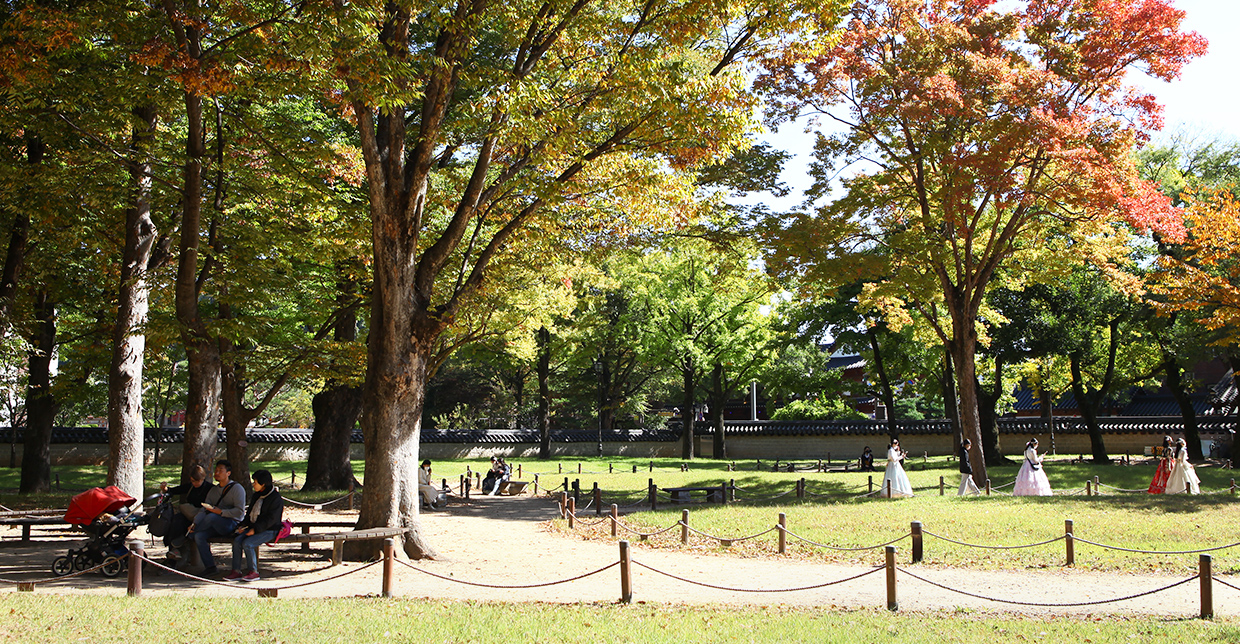
Many tourists visit Gyeonggijeon, but probably not many people have an in-depth knowledge of what this place is like. Gyeonggijeon Hall was built in the 10th year of King Taejong's reign to enshrine the portrait (portrait) of King Taejo Lee Seong-gye, and is closely related to the establishment of the current Hanok Village here, the hometown of the Jeonju Yi Clan, who succeeded the royal family for 500 years from Lee Seong-gye. there is The name Gyeonggijeon means ‘an auspicious site where a dynasty arose’.
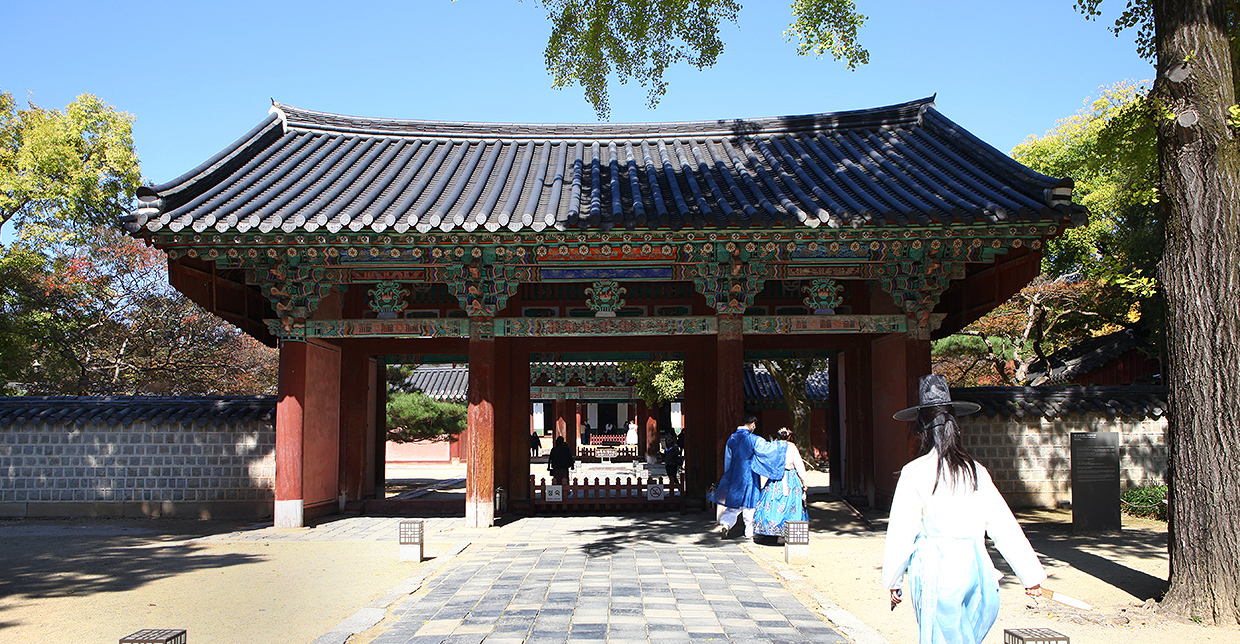
As a symbol of the Hanok Village, the first course of the tourist commentary tour is Gyeonggijeon tour. The commentary tour starts every hour from 10:00 am, so if you are curious about Gyeonggijeon, it is recommended to participate in the tour program. The main course starts at Hongsalmun(a gate painted red), goes through Oesammun, Naesammun, Jinjeon(place where Taejo’s royal portrait is enshrined), Jeonjusago(place where the annals of the Joseon Dynasty are stored), and finally King Yejong’s placenta (where the umbilical cord is buried). place) and visit the tombstone. In addition, Gyeonggijeon is located within Gyeonggijeon Hall, which houses the ancestral tablet of Yi Han of the Shilla Dynasty, who is said to have been the founder of the Jeonju Yi Clan.
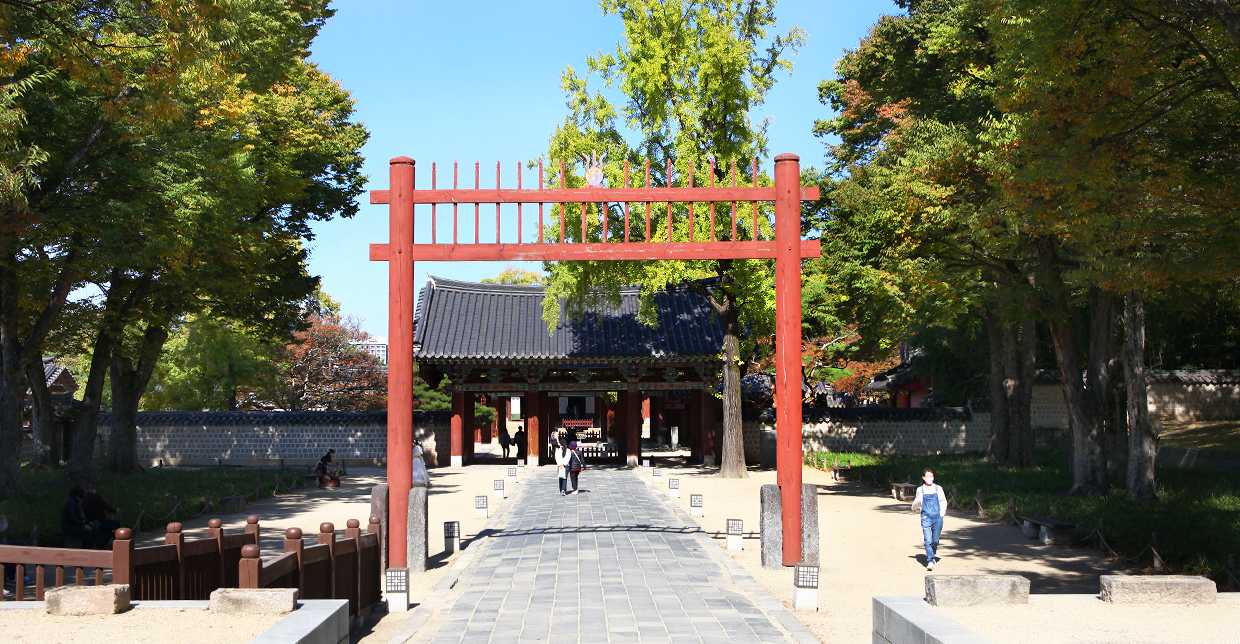
The must-visit place in Gyeonggijeon is, of course, the ‘Eojin Museum’ where you can see various portraits of King Taejo Lee Seong-gye, and this is the only museum in Korea that keeps portraits of other kings besides King Taejo. The museum consists of the royal portrait room of King Taejo, the royal portrait room where the portraits of six kings including King Sejong are enshrined, the history room where the history of Gyeonggijeon and the portrait of Taejo is recorded, and the royal palanquin and relics used when enshrining the royal portrait are displayed.
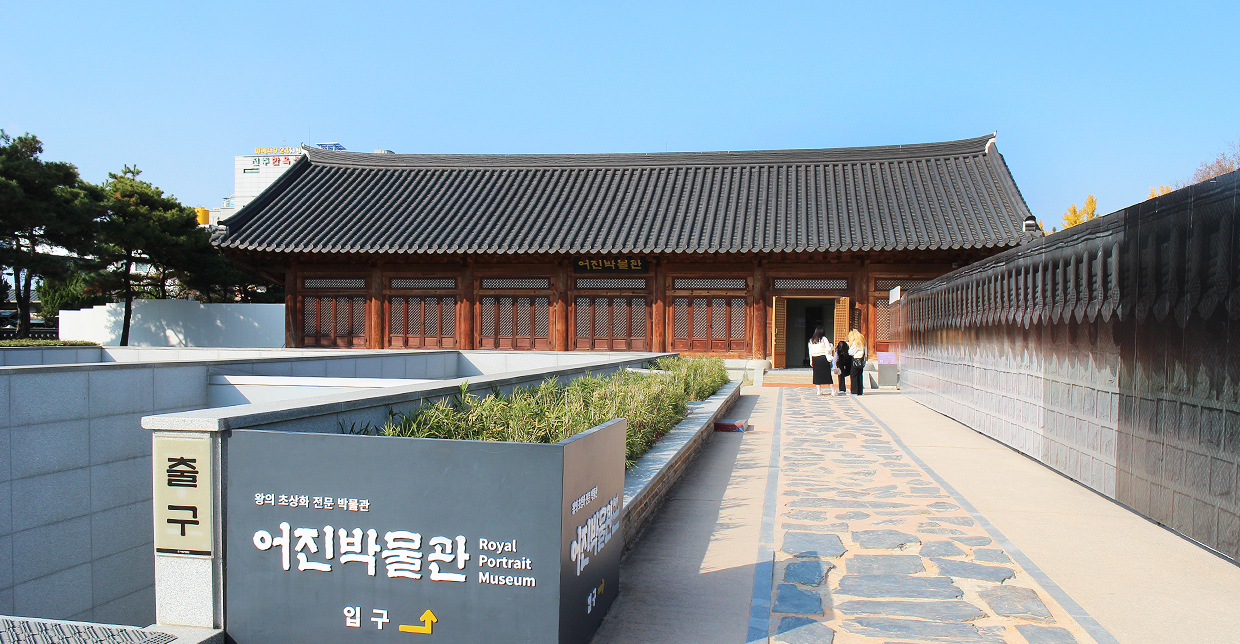
The king's portrait(Youngjeong) has a great significance not only in commemoration, but also in promoting the permanent existence of the royal family. In particular, the portrait of King Taejo, as the founding father of Joseon, has a more symbolic meaning in the era. During Imjinwaeran(the Japanese invasion of Korea in 1592) and Jeongyujaeran(the invasion of Jeongyu in 1592), to avoid the loss of the portrait of King Taejo, scholars evacuated the portrait here and there to prove it.
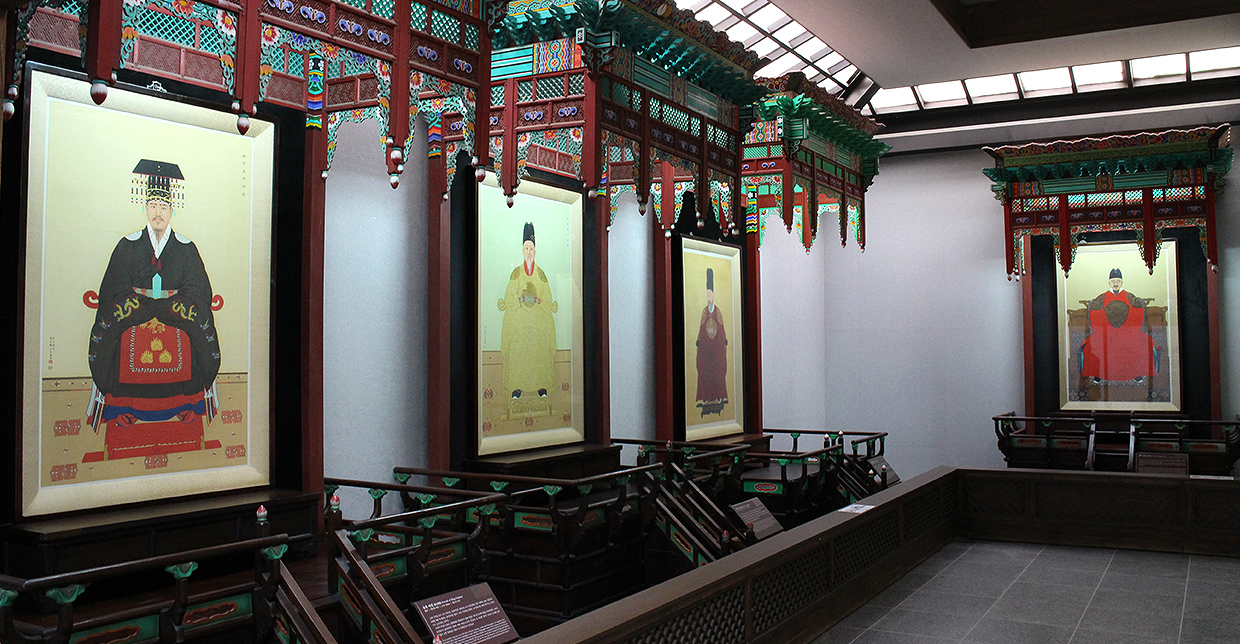
The Eojin Museum operates permanent exhibitions throughout the year except for January 1st, and special exhibitions and experience programs on themes such as the Annals of the Joseon Dynasty and the history of the Hanok Village are held from time to time, so check the schedule on the homepage before visiting. it would be nice to do.
Gyeonggijeon can be visited anywhere by paying an admission fee of 3,000 won for adult tourists. The last Wednesday of every month is “Culture Day,” so you can watch it for free. In addition to visiting history, you can take a leisurely stroll around the grounds of Gyeonggijeon, as various kinds of old trees and palace-style buildings form a quiet and wonderful view. It is for this reason that Gyeonggijeon, along with nearby Jeonju Hyanggyo, is loved as a filming location for historical dramas and movies. In particular, if you take a photo here wearing a Hanbok, you can get the best shot of your life no matter where you are and what pose you take.
- Location
- 44 Taejo-ro, Wansan-gu, Jeonju-si Map View
- Operating hours
- Summer season (March-October) 09:00-19:00
Winter season (November - February) 09:00 - 18:00
A fusion experience course where past and present harmonizeHanbok experience, tea ceremony experience
It is definitely the Jeonju Hanok Village that started to popularize the current palace Hanbok tour nationwide, including Gyeongbokgung Palace in Seoul. Since the first 'Hanbok Day' festival was held in Jeonju in 2012, Hanbok experience has become a representative traditional cultural experience product of Jeonju Hanok Village.
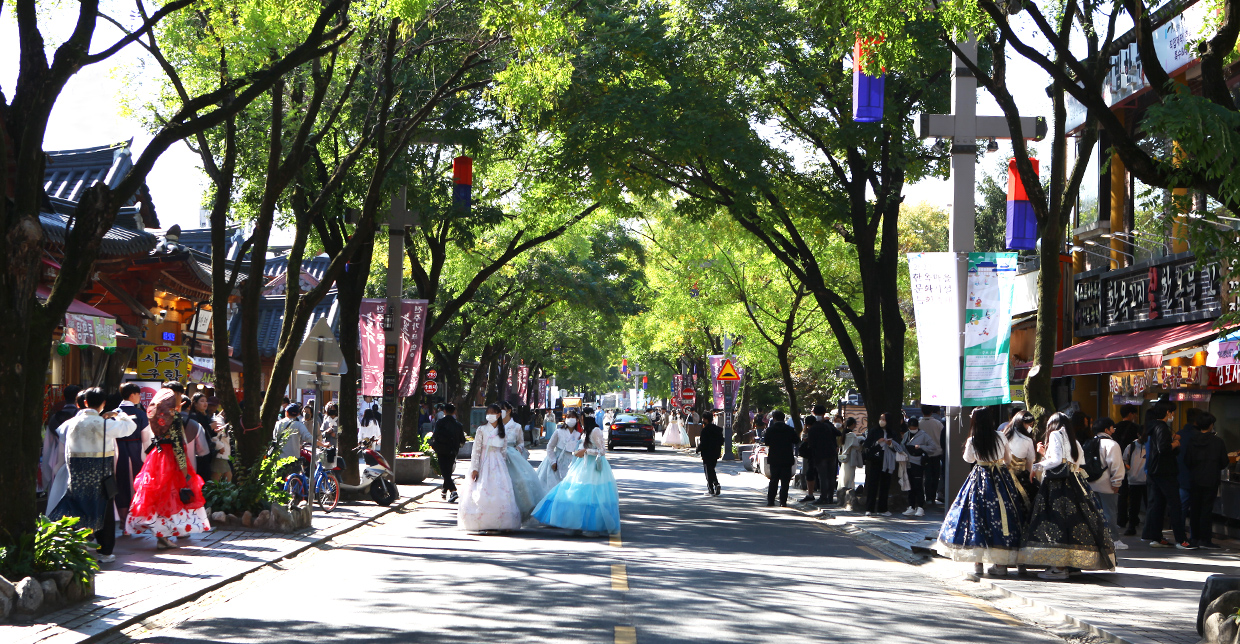
Currently, there are shops that rent Hanbok costumes all over the Hanok Village, so you can rent a full set of Hanbok, including hair ornaments, at a cost of around 20,000 won an hour, anywhere. In addition to general traditional Hanbok, the genre has also diversified, from the clothes of kings and queens, scholars and warriors, Gisaeng clothes, splendidly modified and improved Hanbok, and modern costumes made famous through dramas and old school uniforms.
If you walk the streets of the Hanok Village on a weekend with good weather, you will meet people of all ages and genders dressed in Hanbok. You can see Hanbok, which is hard to see even on holidays, all year round here, and no matter how unique you wear, you don't have to pay attention to the people around you. Even men and women exchange clothes for each other, and there are many tourists who wear situational plays or take pictures of their lives wearing fun concept costumes that they would never normally be able to wear. The Hanok Village is evolving from a simple tourist destination to an experience space where you can enjoy escaping from everyday life.
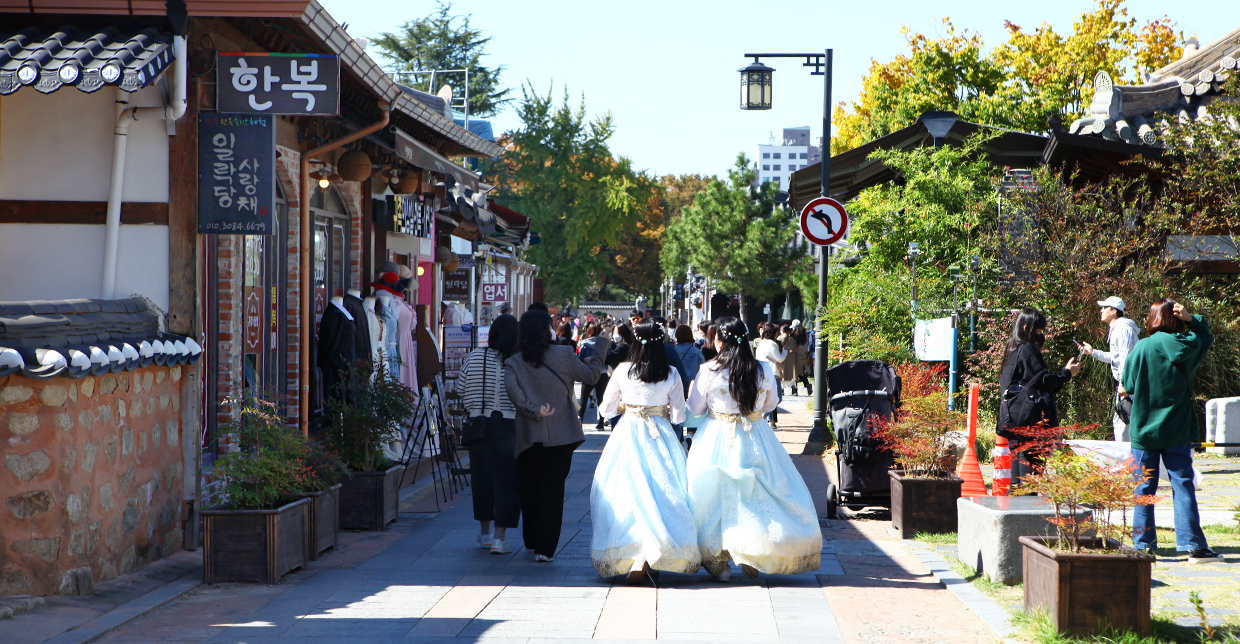
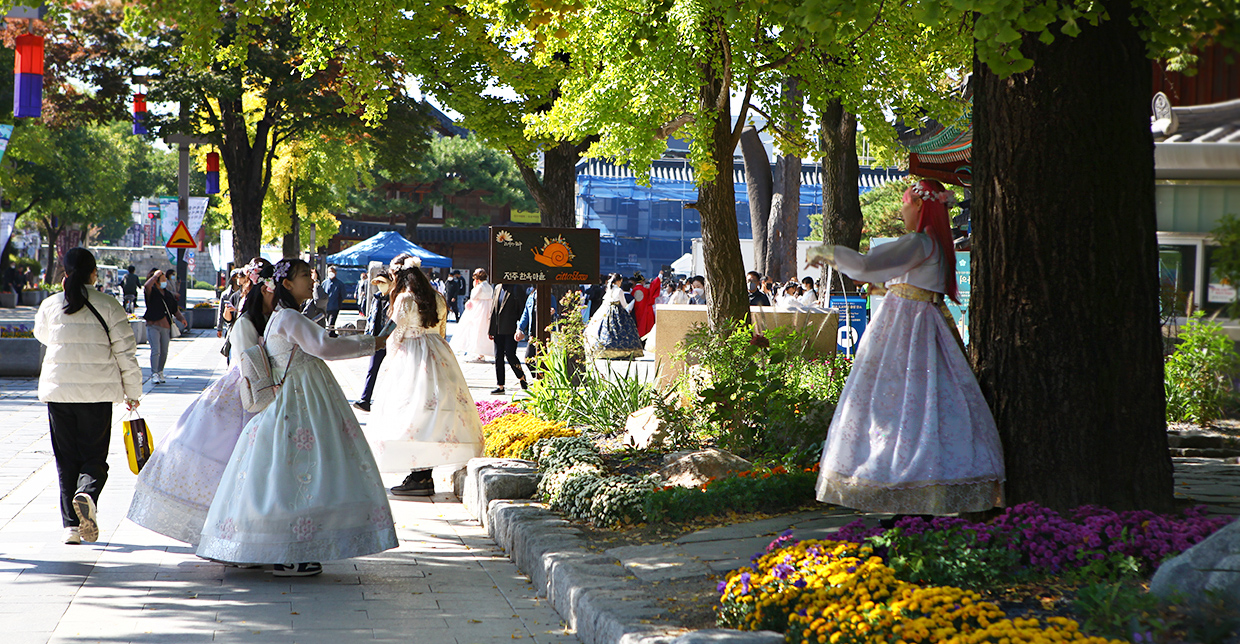
If you have dressed up in Hanbok, you should definitely experience it. The most common, inexpensive, and elegant experience that can be worn in Hanbok in the Hanok Village is the traditional tea ceremony experience. In Hanok Village, there are cultural facilities that offer tea ceremony experiences for groups, such as Seunggwangjae and Hanbyeok Cultural Center, but this time, we will introduce Dahwawon where you can experience private tea ceremony at an affordable price. It is a traditional tea house with a cozy and comfortable feeling as it has the structure of a traditional Hanok.
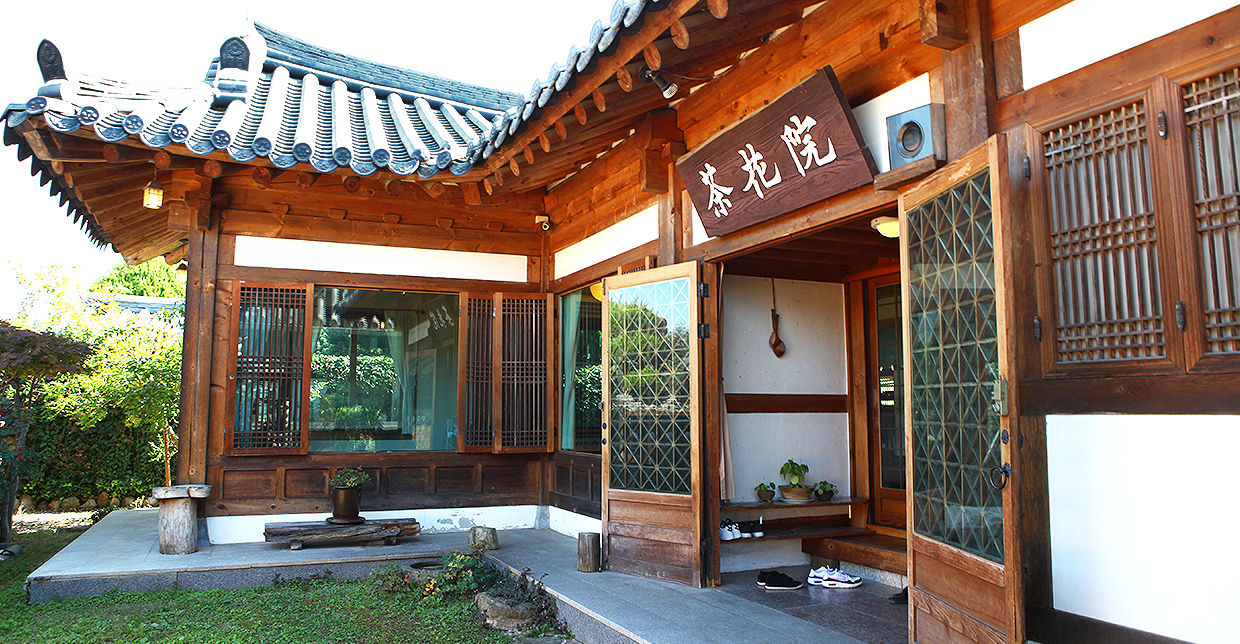
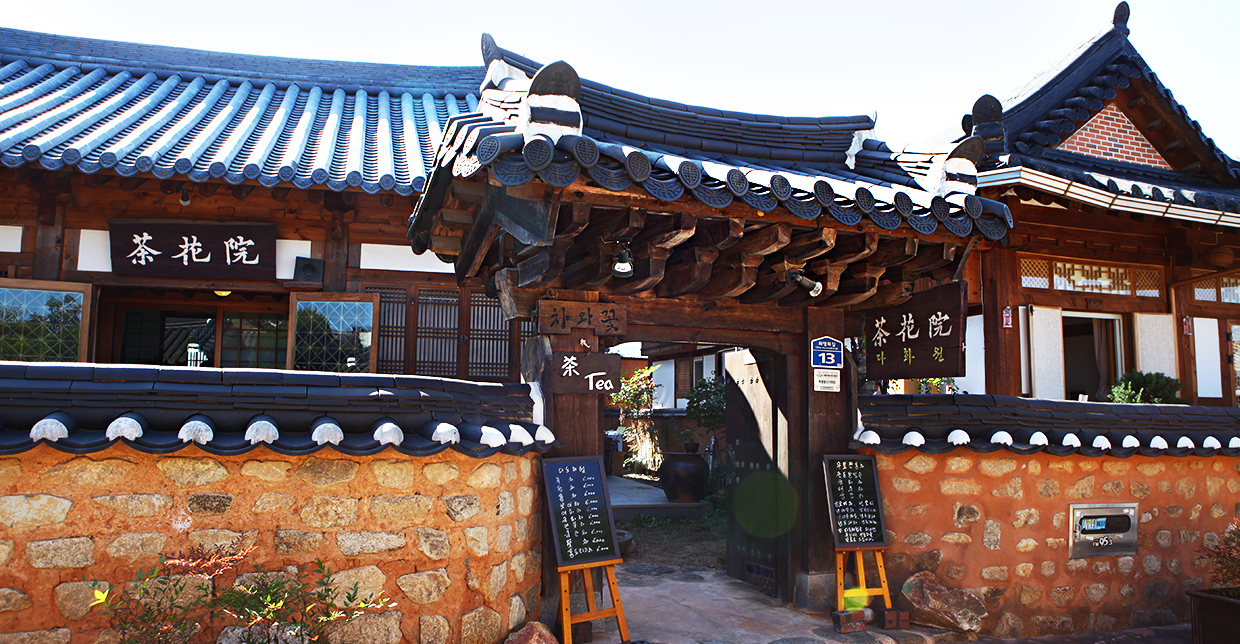
A low table made of trimmed logs, a cushion made of undyed cotton cloth, bonsai and earthenware are neatly arranged, and the tea set displayed here and there also delights the eye. If I own one and keep it at home, it seems that the class of my room will increase.
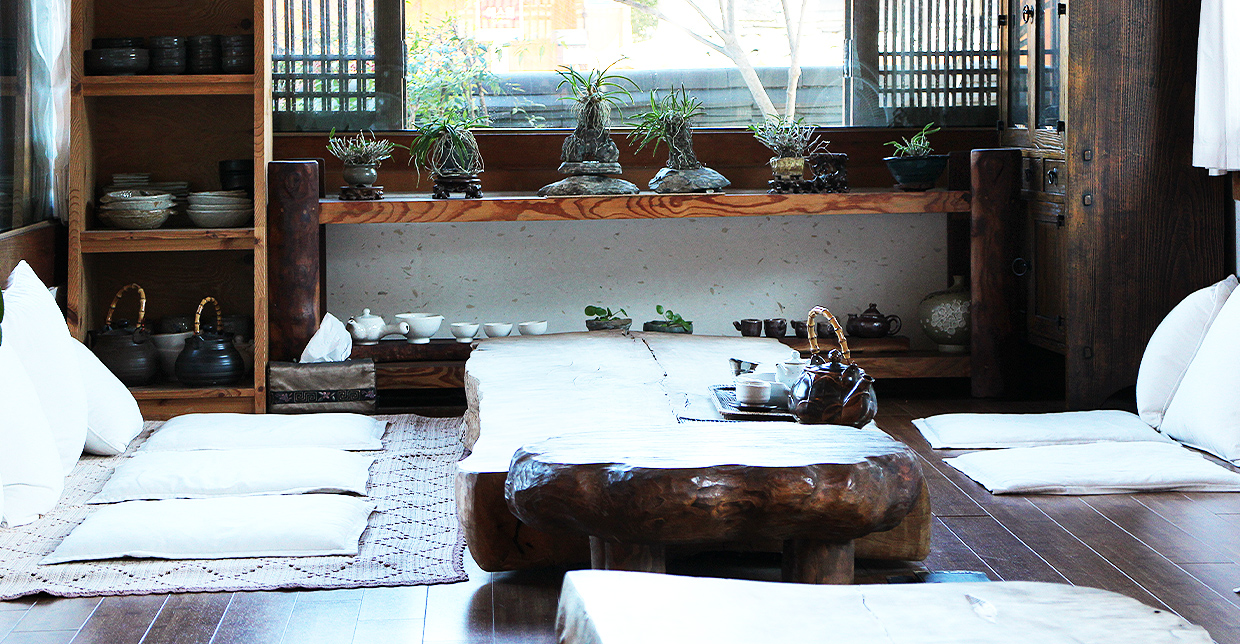
The advantage of Dahwawon is that you can taste handmade traditional tea brewed by the owner for free along with the tea ceremony experience if you pay an experience fee of 6,000 won per person. Considering the nearby water prices of 6,000 to 8,000 won for a cup of coffee, it is a cost that I am tearfully grateful for. The menu is diverse, and in addition to the types of tea I often see, such as green tea, black tea, and pu-erh tea, I decided to try the flower tea, which is said to have a good scent, on the recommendation of the owner. The depth of the fragrance is different from the tea you drank in a tea bag at a cafe.
As the taste changes depending on the time, frequency, and sincerity of pouring hot water, you become prudent and focus on the taste and aroma of tea. Flower tea has a refreshing hibiscus and sweet rose scent, and it is said that it is mainly made from red flowers. The free traditional tea (red bean shaved ice) is also so numerous that it is difficult to choose just one, the amount is as generous as the owner's hospitality, and the taste is good, probably because it is homemade tea. If you come to the Hanok Village with someone, where your eyes, mouth, nose, and heart are all generous, I hope you visit.
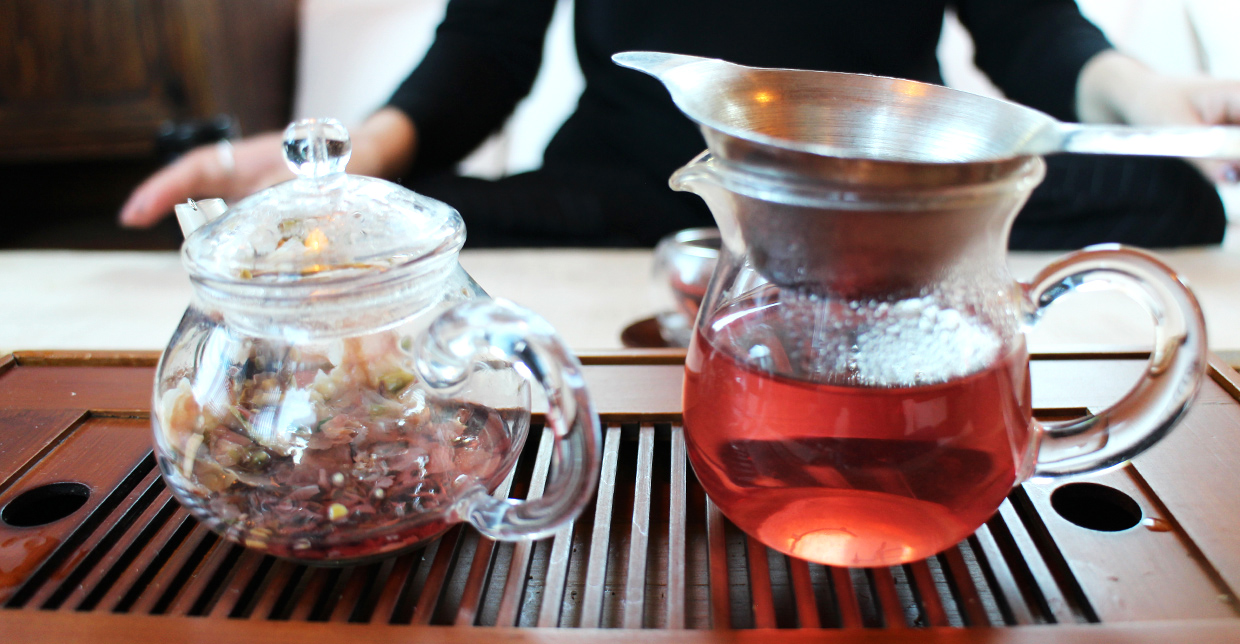
- Location
- 13 Choimyeonghui-gil, Wansan-gu, Jeonju-si Map View
Must try if you comeHanok Village street food tour
If you have emptied your mind and body while drinking tea, now is the time to start eating in earnest. Hot bean sprout soup and Moju(rice wine), a generous bowl of Makgeolli and traditional Bibimbap. You must taste the traditional food that represents Jeonju, a food creative city selected by UNESCO. However, short-term travelers who need to spend their stamina by walking to many places in a short time, or young travelers who are interested in various fusion foods and street food, can never pass by the delicious smelling street food that is spread in every corner of the Hanok Village. I wonder if the Hanok village is called the ‘Mock Kit List(must eat list)’. Hanok Village food is like a licorice of travel that adds fun, stamina, and a sense of accomplishment to a busy trip. The Hanok Village street food has a wide variety of tastes and genres, but among them, we will introduce only a few very famous menus that can replace meals and be enjoyed conveniently.
#Daurang Handmade Dumpling House
Daurang Handmade Dumpling House started as a small dumpling shop, became a must-have course for Jeonju Food, and now it is a handmade dumpling brand that has become a nationwide delivery food both in name and reality. The menu has increased one by one, and now there are 22 types of dumplings alone. If you want to eat quickly but have trouble choosing, ask the host for a recommended menu. There are 8 gift sets or 22 items to choose from in the online mall, but there is no set in the store. Still, you must choose the shrimp dumplings unconditionally.
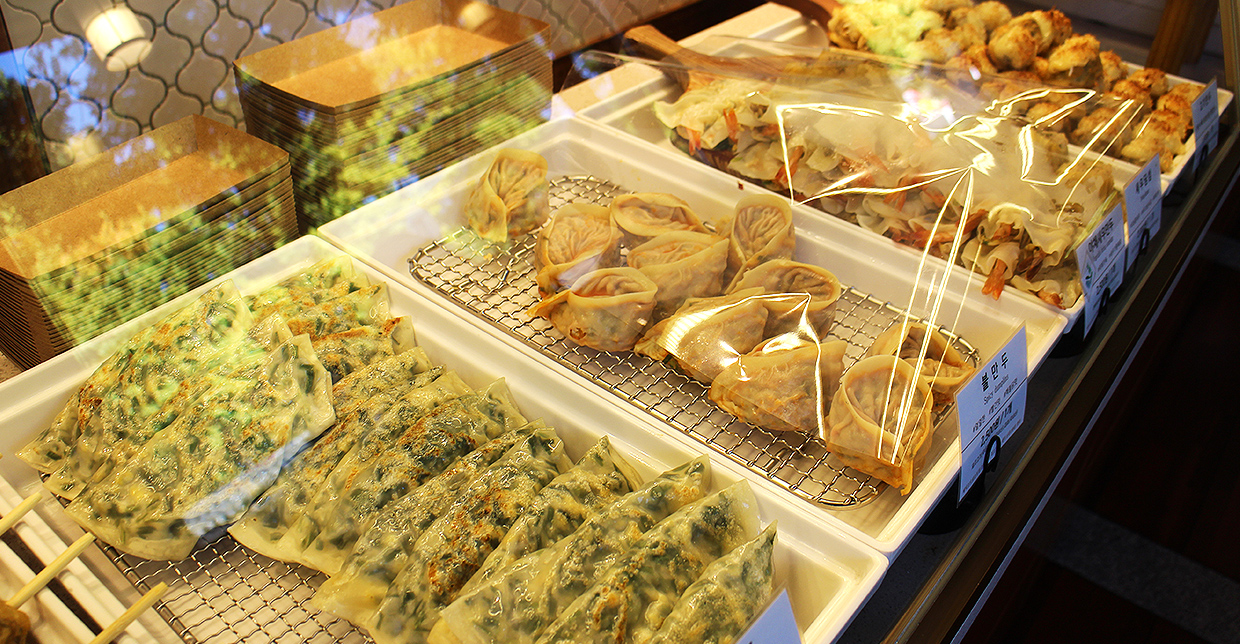
- Location
- 33, Taejo-ro, Wansan-gu, Jeonju-si Map View
#Seomingapbumayagyukjeon
The original Yukjeon(Korean meat pancake) is delicious. This is because chewy and salty beef is thinly sliced, dipped in egg water and then fried in oil. How delicious would this kind of food feel when you are tired and hungry from walking all day? Watching the fantastic scene of frying pans with the smell of oil on the spot, you are on the verge of going crazy with a craving for food. A plate of instant meat pancakes with fresh onions and a bowl of cool Moju(rice wine) makes you wonder if there is another heaven in the world.
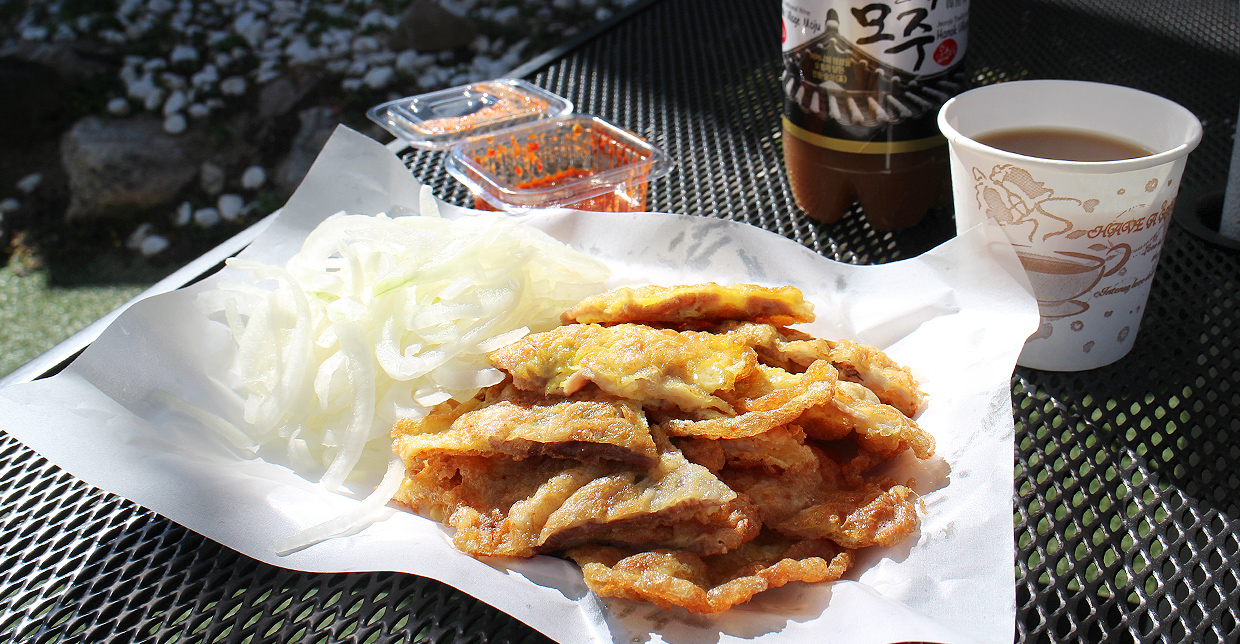
- Location
- 25-8 Taejo-ro, Wansan-gu, Jeonju-si Map View
#Gilgeoriya Baguette Burger
As the name suggests, it is famous for its baguette burger, which is carried and eaten on the street. Spicy seasoned meat and vegetables are wrapped in crispy baguette bread, so after eating, your mouth will feel fresh and full. It goes well with any beverage, such as soda, beer, or coffee, and is a useful snack that is delicious, inexpensive, and filling one meal. It is a taste that often comes to mind when walking on the street and hungry, perhaps because of its moderately salty and uniquely spicy taste.
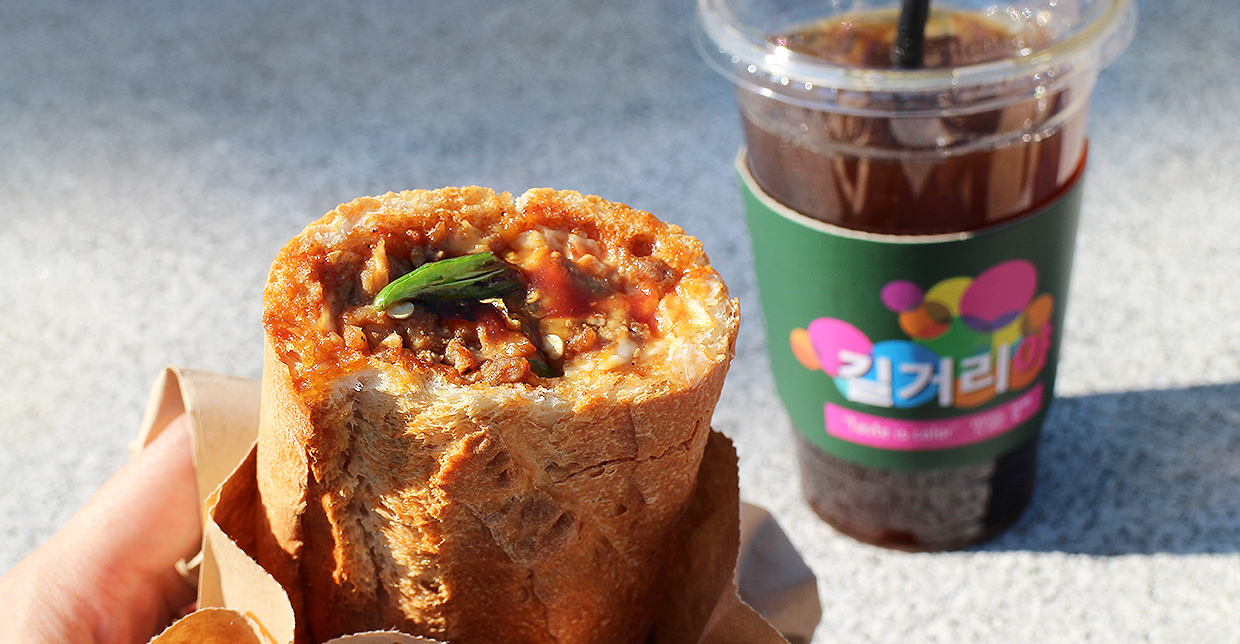
- Location
- 124 Gyeonggijeon-gil, Wansan-gu, Jeonju-si Map View
#Kyodong croquettes
Anything fried in oil is delicious, but what if you put a dish with guaranteed taste into a croquette? Maybe it will taste as touching as 2*2=4. Common croquettes with familiar names such as Kimchi, potato, Japchae, and curry, as well as unique croquettes that can only be tasted in Jeonju Hanok Village, such as Ddeokgalbi, cream cheese, Jeonju Bibimbap, and Bulgogi Bibimbap, stand out. The taste of spicy and warm Bibimbap hidden in crispy croquettes cannot be tasted anywhere else. It is a place where waiting lines are lined up on weekdays and weekends, but if you come to the Hanok Village, you have to wait in line unconditionally.
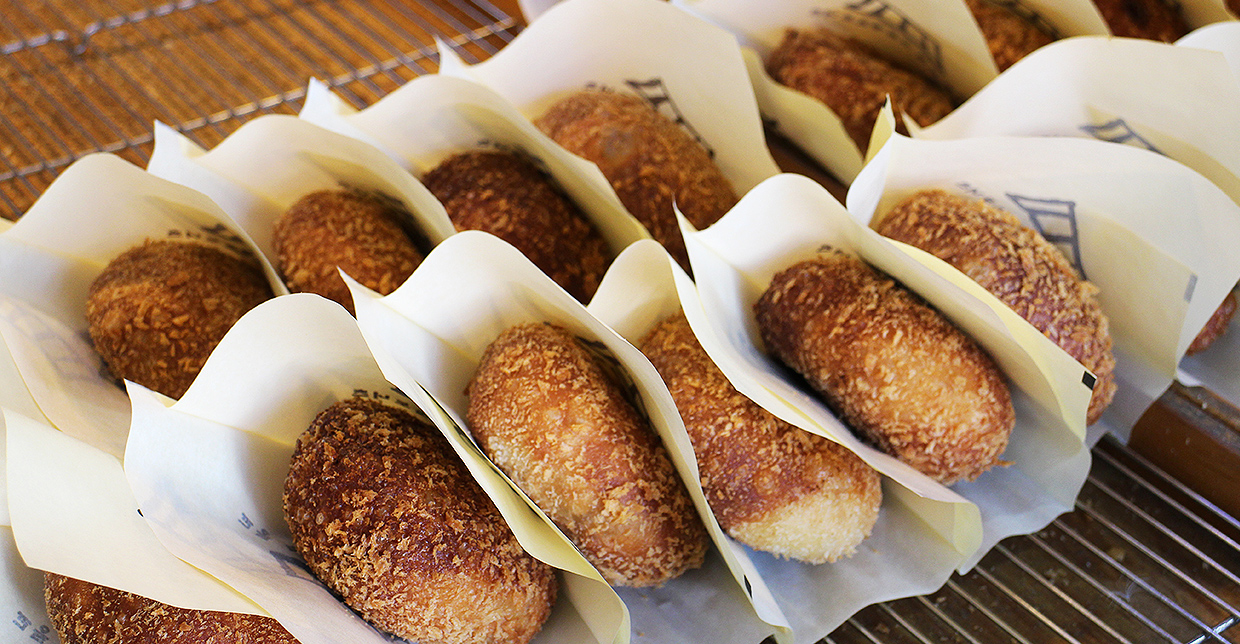
- Location
- 126 Gyeonggijeon-gil, Wansan-gu, Jeonju-si Map View
![[2022.11] Hanok Village Tour for One-Day Travelers](/upload_data/board_data/BBS_0000025/168800433002198.jpg)
